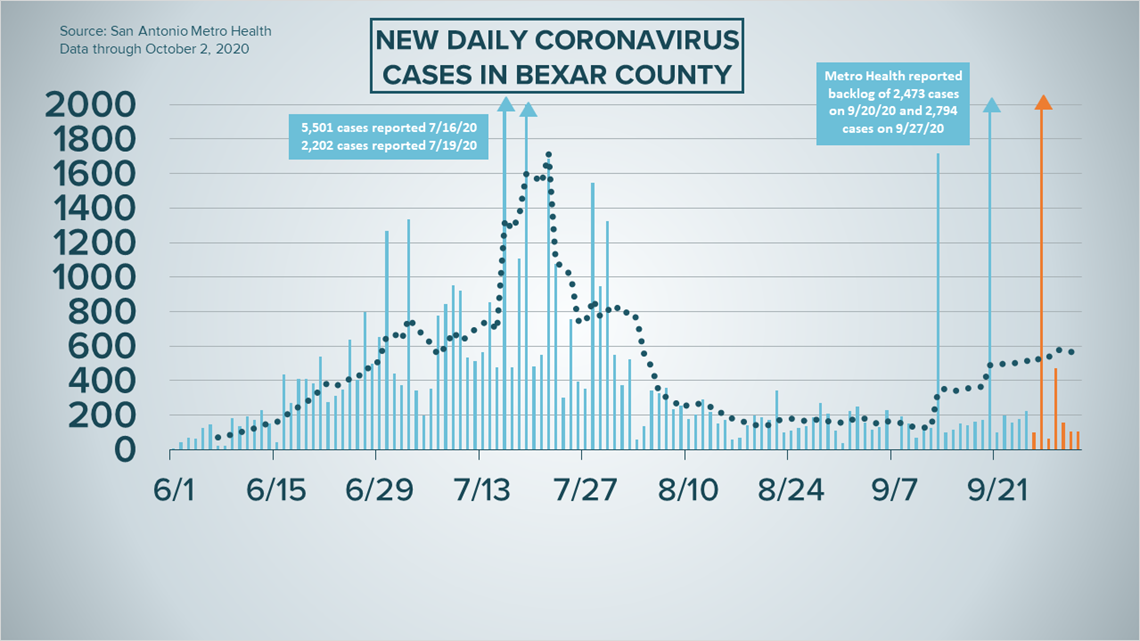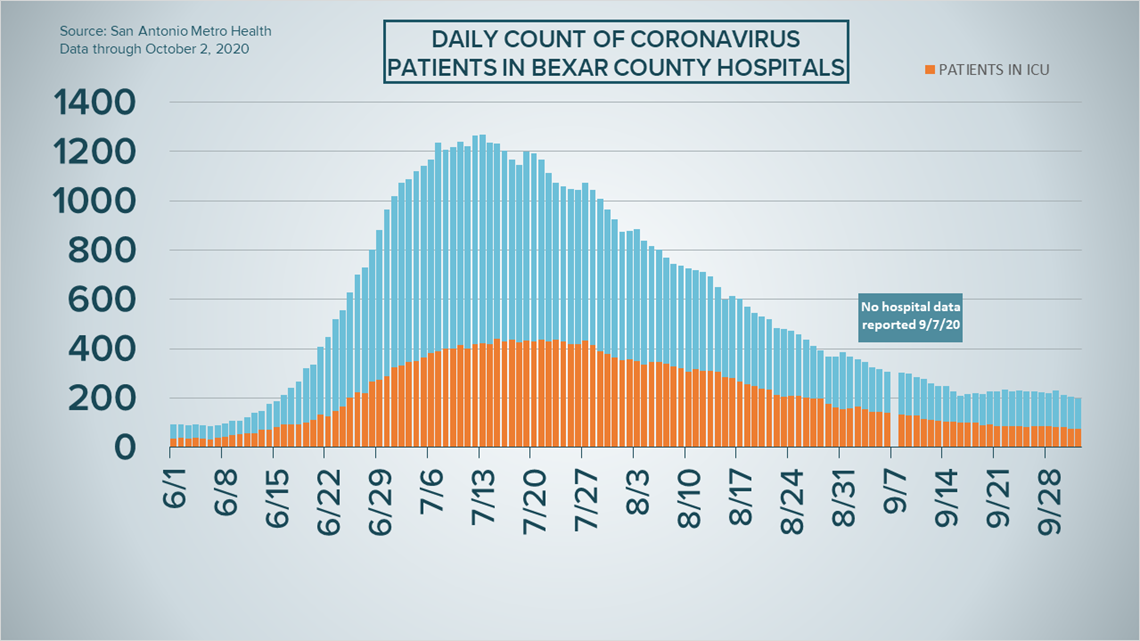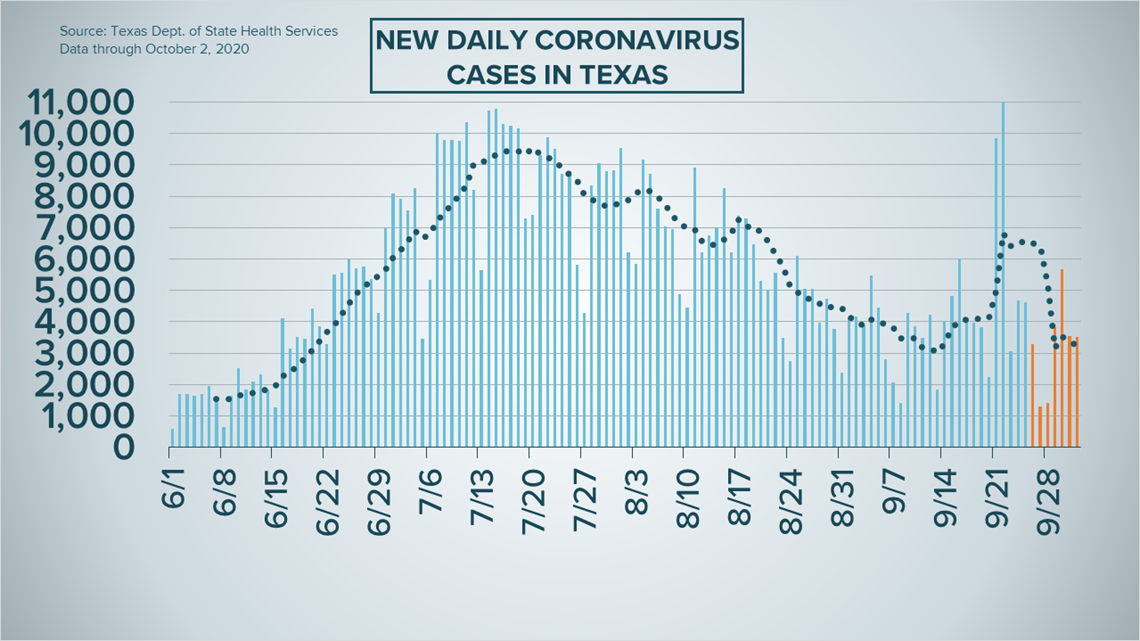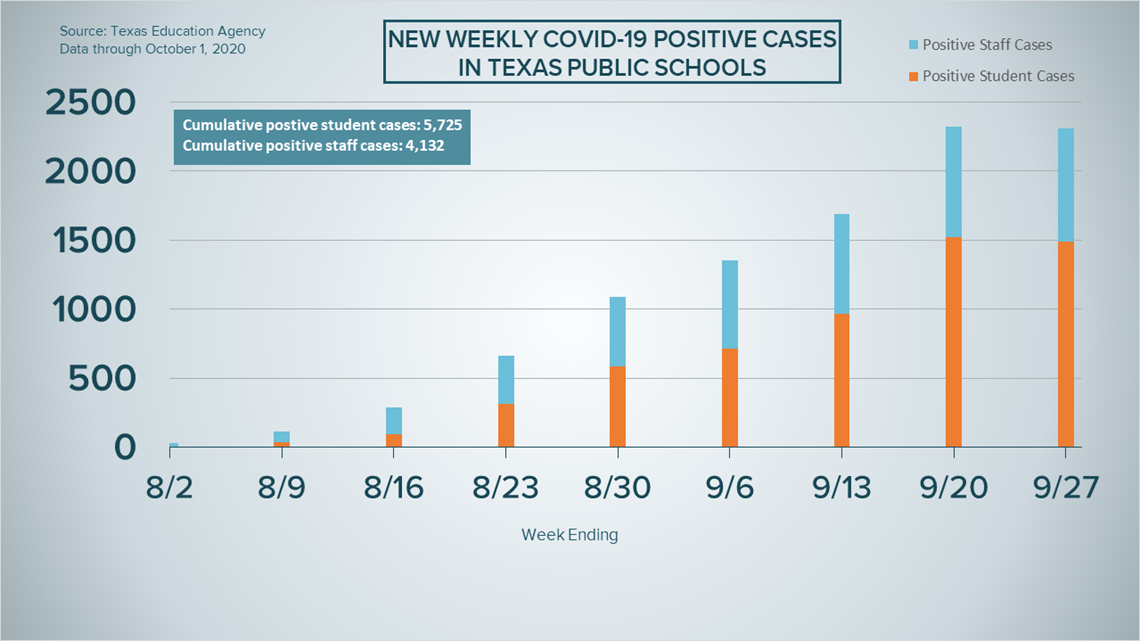SAN ANTONIO — We're tracking the latest numbers from the coronavirus pandemic in San Antonio and across Texas. Here are the latest numbers reported by Bexar and surrounding counties:
- Bexar County: 103 new cases were reported Friday, bringing the total number for the county to 58,039. The county death toll remained at 1,138 after no new fatalities were reported.
- Comal County: The county reported seven additional cases on Friday and no additional deaths. There have been a total of 3,493 cases of COVID-19 in the county – including 2,754 confirmed cases – while 116 county residents have died. County officials say there are 118 active coronavirus cases, and 3,259 residents are considered recovered.
- Hays County: Officials in Hays County on Friday reported five new cases in the county and no additional virus-related deaths. As of Friday, there are a total of 5,951 lab-confirmed cases in the county (1,277 of which are active) while the death toll remains at 55. 4,619 residents have recovered from the virus.
How Bexar County is trending
We've tracked how many coronavirus cases have been confirmed in Bexar County from the time officials began reporting cases in March 2020. The graphic below shows the number of cases since June and charts those daily case numbers along a 7-day moving average to provide a more accurate picture of the overall coronavirus case curve in our area and the direction we're trending amid the pandemic.
On Friday, San Antonio Mayor Ron Nirenberg reported an additional 103 coronavirus cases in Bexar County, raising the total to 58,039 diagnoses since the pandemic began. The seven-day moving average for daily case totals decreased from 167 on Thursday to 150 on Friday.
Nirenberg also reported no new fatalities from COVID-19 complications. In all, 1,138 Bexar County residents have died from the virus.


The number of local hospitalizations decreased slightly on Friday to 196, the first time that number has been below 200 since June 15. The number of patients utilizing ventilators to breathe (31) went down while the number of patients in intensive care (76) remained unchanged since Thursday.


Coronavirus in Texas
The number of Texans who have tested positive for the coronavirus since the pandemic began grew by 3,503 cases on Friday, according to the Texas Department of State Health Services.
2,729 of those are new, while the other 774 cases stem from a number of backlogs in several counties and groups of previously unreported cases in some areas. More details can be found at the top of this page.
In total, 756,004 coronavirus cases have been confirmed in Texas.


State health authorities, meanwhile, reported an additional 72 virus-related deaths on Friday. At least 15,895 Texans have passed away from COVID-19 complications.
The state also saw a small rise in current hospitalizations. There were 37 more Texans receiving treatment for coronavirus symptoms, for a total of 3,227.
The state estimates that 672,144 Texans have recovered, while 69,431 Texans remain ill with COVID-19.
Meanwhile, the Texas Education Agency updated its online coronavirus database to show that there have been 9,857 cumulative cases among staff and students across the state as of Sept. 27. More information can be found here.


Latest Coronavirus Headlines
- President Trump taken to military hospital after COVID-19 diagnosis
- Joe Biden tests negative for coronavirus, wishes Trump speedy recovery
- Travis County coronavirus cases reach 29,647, 430 deaths
- 'No Time to Die' release date delayed again to Easter weekend 2021
- Guadalupe County leaders mull over mask mandate
- 5 questions answered following President Trump, Melania COVID-19 diagnosis
- Hays County reports 1,277 active COVID-19 cases, 55 deaths
- Wall Street trims losses after Trump's positive coronavirus test
- Comal County extends voter registration hours
Coronavirus symptoms
The symptoms of coronavirus can be similar to the flu or a bad cold. Symptoms include fever or chills, cough, shortness of breath or difficulty breathing, fatigue, muscle or body aches, headache, new loss of taste or smell sore throat, congestion or runny nose, nausea or vomiting and diarrhea, according to the Centers for Disease Control.
Most healthy people will have mild symptoms. A study of more than 72,000 patients by the Centers for Disease Control in China showed 80 percent of the cases there were mild.
But infections can cause pneumonia, severe acute respiratory syndrome, kidney failure, and even death, according to the World Health Organization. Older people with underlying health conditions are most at risk.
But infections can cause pneumonia, severe acute respiratory syndrome, kidney failure, and even death, according to the World Health Organization. Older people with underlying health conditions are most at risk.
Experts determined there was consistent evidence these conditions increase a person's risk, regardless of age:
- Chronic kidney disease
- COPD (chronic obstructive pulmonary disease)
- Obesity (BMI of 30 or higher)
- Immunocompromised state (weakened immune system) from solid organ transplant
- Serious heart conditions, such as heart failure, coronary artery disease, or cardiomyopathies
- Sickle cell disease
- Type 2 diabetes
The CDC believes symptoms may appear anywhere from two to 14 days after being exposed.
Human coronaviruses are usually spread...
- Between people who are in close contact with one another (within about 6 feet).
- Through respiratory droplets produced when an infected person coughs, sneezes or talks. These droplets can land in the mouths or noses of people who are nearby or possibly be inhaled into the lungs.
- Some recent studies have suggested that COVID-19 may be spread by people who are not showing symptoms.
Help stop the spread of coronavirus
- Stay home when you are sick.
- Eat and sleep separately from your family members
- Use different utensils and dishes
- Cover your cough or sneeze with your arm, not your hand.
- If you use a tissue, throw it in the trash.

